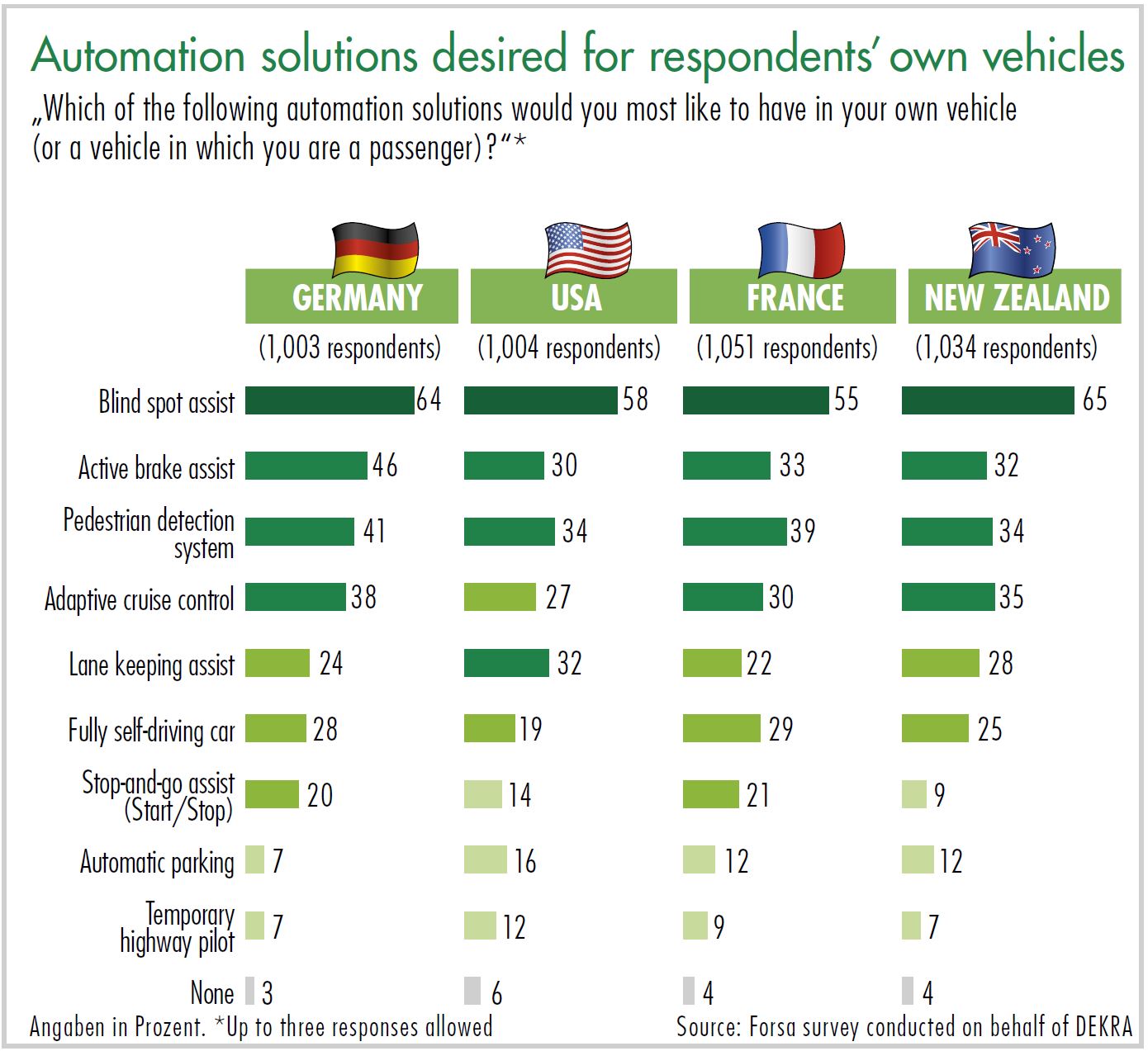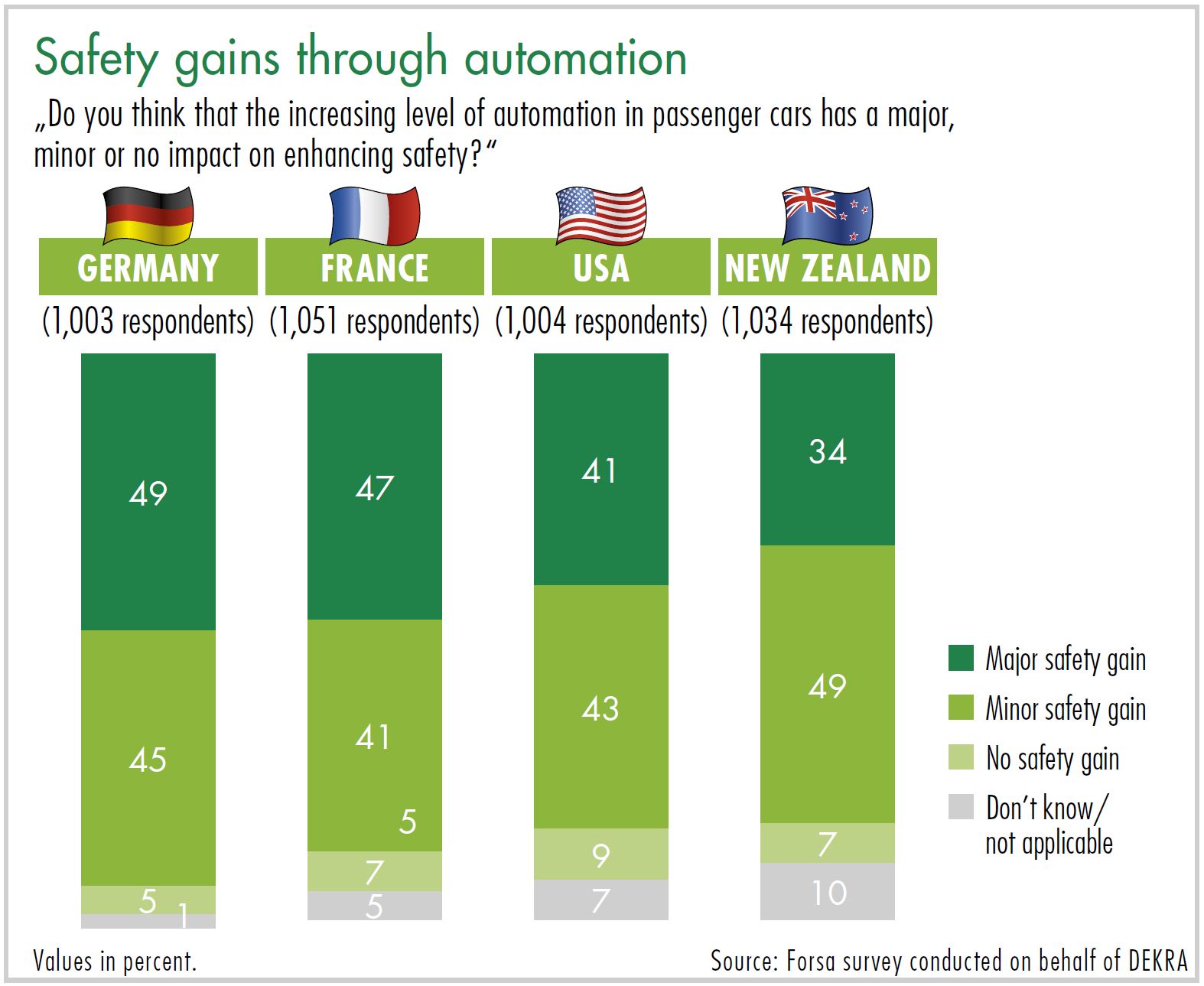Automated driving: Germans much more skeptical than other nationalities
One notable aspect with regard to driver assistance systems and the different levels of automated driving is the often rather skeptical attitude among car drivers in different countries, as revealed by a 2015 survey commissioned by DEKRA. According to this, only 8% of respondents in Germany believe that fully autonomous cars will catch on within the next ten years. 32% expect that it will take more than 20 years, while a further 31% even believe that fully autonomous cars will not become an established concept at all. The term “fully autonomous” in this context refers to automation level 5 of the VDA classification, whereby the vehicle is driverless and, therefore, all occupants are merely passengers. Among the other countries covered in the survey, significantly more respondents – 21% in France, 23% in New Zealand and 33% in the USA – expect autonomous cars to become a success by 2025.
In all four countries, a significant majority think that the increasing level of automation in cars will bring about an increase in overall safety. In Germany, almost as many as half (49%) envisage major safety gains. Only a slim minority (5%–9%) in all countries believe that automation will not lead to any safety increases at all.
Drivers in all of the countries surveyed expect the blind spot assist system to enhance safety most of all. In all countries, it was most commonly listed among the three systems with the greatest relevance to safety, with the percentage of respondents ranging from 57% to 65% depending on the country. Below the top rank, the countries show a number of considerable differences. Whereas lane keeping assist, for example, is rated as extremely relevant to safety in both the US (41%) and New Zealand (39%), it plays a less important role for respondents in France (29%) and Germany (24%). Europeans consider active brake assist to be a more important safety feature, for instance (Germany 54%, France 47%). According to the results of the survey, the outlook for the acceptance of driver assistance systems and higher-level automated driving doesn’t look too bleak in the four countries concerned. Only a minority of between 3% and 6% would not like any electronic assistance at all in their own cars.
However, even in new cars, state-of-the-art safety systems are nowhere near as widespread as people sometimes assume. This is revealed by a current study – conducted by the business consultancy McKinsey & Company – of more than 5,500 car buyers worldwide. According to this study, Adaptive Highbeam Assist is the most common modern assistance system and is to be found in 23% of new vehicles. Functions such as blind spot assist or traffic sign recognition systems, however, are included in just one in ten cars. Although 72% of German car drivers are aware of the most important driver assistance systems, only one in four actually try them out on test drives. Nevertheless, customers who drive a car equipped with driver assistance functions are extremely satisfied: Nine out of ten respondents said that they would request these functions again the next time they buy a car. These figures underscore the need to further raise people’s awareness of the benefits these systems offer in terms of safety and comfort – especially as these technologies pave the way toward partially, highly and fully automated cars and could potentially help to prevent accidents caused by human error.



